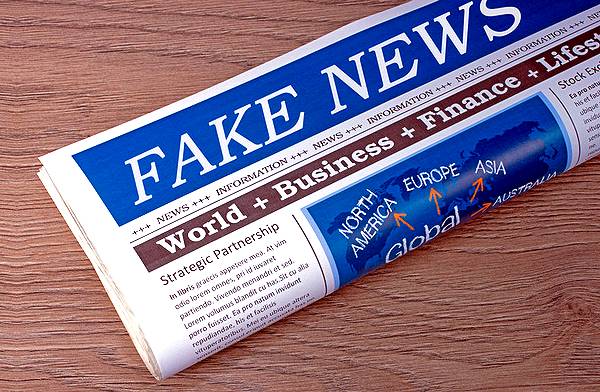Statistics tell us what’s happening in the world around us—from weather forecasts, to crime rates, to baseball rankings. Yet, with so much fake news sloshing around, we often fail to realize how easily statistics can lead us astray.
Lies, damned lies, and statistics.
Some statistics turn out to be wrong, but more commonly they mislead. We have difficulty recognizing this because numbers appear objective and apolitical. In How to Lie and Cheat with Statistics, the most popular book on statistics ever sold (first published in 1954), author Darrell Huff warns “The secret language of statistics, so appealing in a fact-minded culture, is employed to sensationalize, inflate, confuse, and oversimplify. It’s not the statistics which are in question—it’s how they’re used.”
What they know that you don’t.
The average Jane or Joe doesn’t know how to properly evaluate and interpret statistics, putting them at a disadvantage. For example, a Congresswoman cites a statistic to back up her argument; a news analyst uses another fact to refute it; and a guest economist references a third to prove them both wrong. Who do we believe? Typically we favor the one who confirms our existing values, beliefs, or assumptions (see: What the Bleep! happened?).
Why should you care? According to economist John Williams (2013), the federal government manipulates not only the methods it uses to calculate its “official” statistics (e.g., cost of living, unemployment, and inflation figures), but fudges some of the data to produce the desired results. Why do they do that? Transfer payments (such as Social Security, welfare checks, and student grants) are indexed to the figures, so lower statistics means Uncle Sam pays less moolah to recipients.
Do you smell a rat?
Here are some questions to ask when someone provides statistics in support of their point of view:
- Who did the study? The phrase “numbers don’t lie” is true, but every statistic has an agenda behind it. Examine who is publishing the numbers and understand the context. Is it a reliable source or fake news? What are they trying to prove?
- What do the stats measure? Make sure the findings are actually what were measured and that all of the data has been reported and explained.
- Which average are they talking about? There’s not one, not two, but three different definitions of “average” in statistics:
- Mean: Sum all the numbers and divide by how many there are. Outliers can significantly affect this, however. For example, last year the average income of a dozen of your friends was a cool $1 billion (if one of ’em was Warren Buffett).
- Median: Typically the more useful indicator, this is the number or value that’s in the middle (i.e., the 50% point). The median on your stats final, for example, tells us the grade itself and that half of the students earned that high or more (and half earned that high or less).
- Mode: No, this not a dessert. It is the number that occurs most frequently in a series. For example, 7 is the most common roll with 2 six-sided dice. A 7 is six times more likely than rolling a 2 or a 12. Place your bets!
- What does it mean? Don’t confuse correlation—when two things vary in sync (say, ice cream sales and frequency of shark attack) with causation—when one thing causes another (such as the sun rises and the cock crows). Many journalists make this mistake. Just because two things change simultaneously doesn’t mean that one caused the other.
Nullius in verba.*
Statistics are easily manipulated, massaged, and misstated. Even when correct, they can be misleading; for example, on average, humans have one testicle (think about it…). Worse yet, if bogus statistical information is repeated often enough, it eventually is considered to be true. So NeXters, here’s how you can buffer the BS tsunami:
- Always be skeptical. If your information comes from a group that has a strong political or philosophical agenda, most likely their statistics have been carefully chosen to promote their point of view (framing trap**). Adopt a “take-nobody’s-word-for-it” attitude. Ask a tribal elder how she interprets the findings and whether they are truly significant.
- Question the experts. Didn’t we listen to the scientists, economists, finance wizards, doctors, celebrities, gurus, and other experts who promised us that if we followed their advice all would be well? Then why ain’t you rich? Experts can be biased without even knowing it. They are frequently wrong, sometimes wildly so.
- Sharpen your “crap detector.” Management guru Karl Albrecht says the skill of critical perception—or “crap detecting” as Ernest Hemingway called it—is becoming an important survival skill. Do a little research to judge the credibility and accuracy of the figures. Most important, make it a habit to ask “Does this make sense?”
* Nullius in verba (Latin for “Take nobody’s word for it”) is the motto of The Royal Society, founded by King Charles II in 1660 to promote the advancement of science.
If you want to inspire confidence, give plenty of statistics. It does not matter that they should be accurate, or even intelligible, as long as there is enough of them.
~ Lewis Carroll, author
** Questionable beliefs can “trap” our better judgment, leading to poor decisions and unintended consequences. In the framing trap, we often underappreciate how significantly others shape our opinions and desires. Learn more about this, and other interesting topics, in the Young Person’s Guide to Wisdom, Power, and Life Success.
Image credit: “Fake news newspaper on desk” by convisum, licensed from 123rf.com (2017).






















